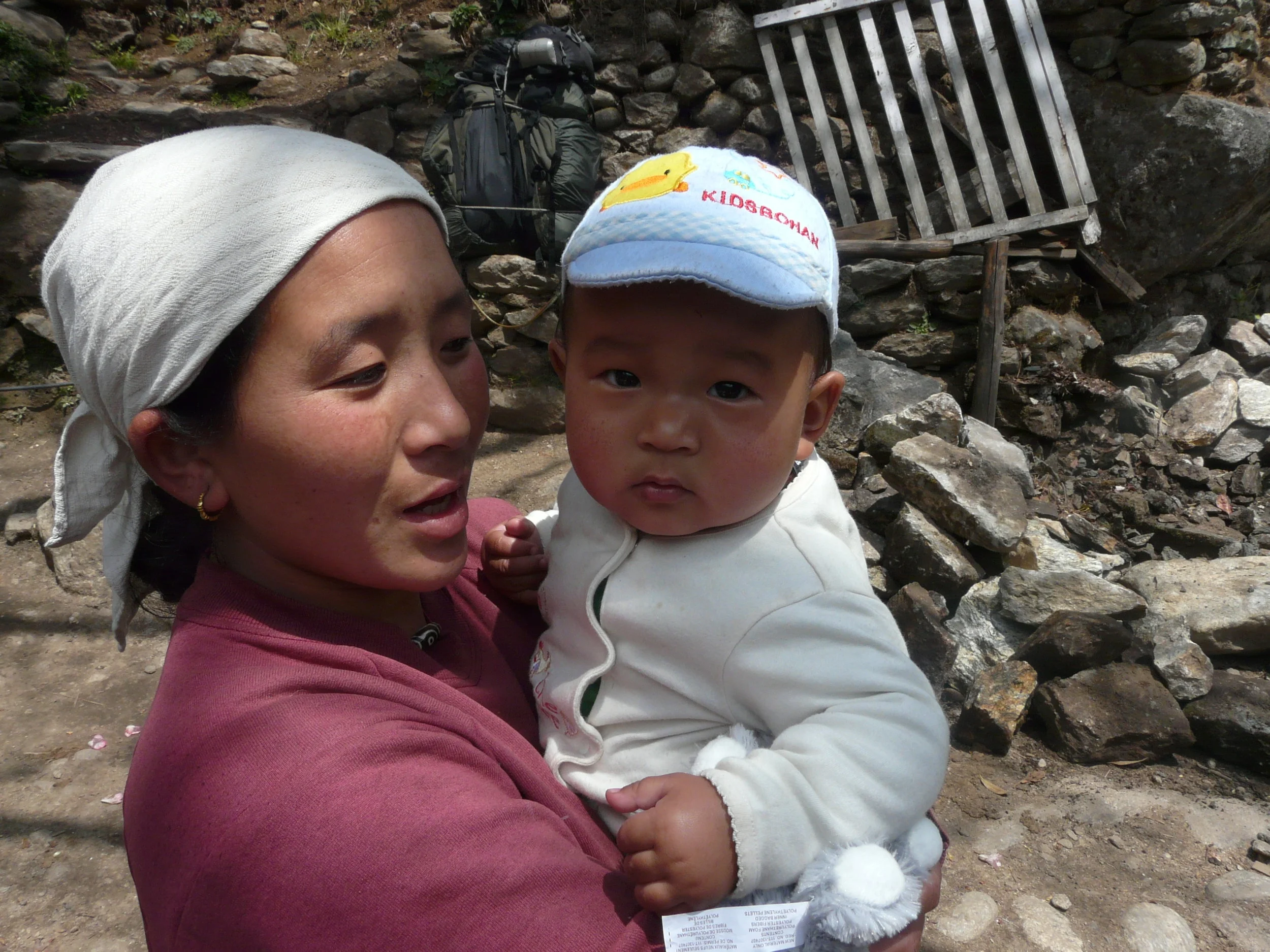The Sherpa of Nepal And the Solu-Khumbu
There are over 50 distinct races of people who are part of the history and mosaic culture of Nepal. More than 85% of the population is of the Hindi faith.
The Sherpa of Nepal are traditionally mountain people. Originating from Tibet 500 years ago, they migrated west across the high mountains to escape war and oppression, settling in the high Himalayas. The word Sherpa in the Tibetan language means “People from the East”.
The Sherpa people make up less than 5% of the overall Nepali population. Typically they are of the Buddhist faith; peaceful and caring people with compassion for all living things.
One of the regions they first colonised was the Solu-Khumbu, home to Everest and several of the world’s highest peaks.
Solu-Khumbu translates literally as; “place where no one lives.”
When the original Tibetan yak herders came over the high desolate passes of the Himalayas, they found large expanses of uninhabited high grazing meadows. This land held promise for their way of life and so they stayed establishing their own way of life.
The Sherpa people still live primarily in the Everest region but they have migrated to other areas of Nepal as well.
Sherpa's names include the day of the week they were born:
Da Monday
Mingma Tuesday
Lhakpa Wednesday
Phurwa or Phu Thursday
Pasang Friday
Pemba Saturday
Nyima Sunday
The first name applies to both males and females. The gender difference is in the middle name. For example; “Pasang Yangjee Sherpa” is a female and “Pasang Nuru Sherpa” is a male. The exception to this naming custom only occurs if the mother had a previous child who died, before the new child was born. In that circumstance, the newborn would not be named for the day of the week.
Sherpa Society
We often think of Sherpa’s as rugged heavy load carriers trudging over the mountain passes and trails. That was certainly the case when Hillary first came to Nepal. However, thanks largely to his efforts raising awareness and building schools for the region, and to the savvy and work ethic of the Sherpa people, they have improved their life and lifestyles significantly while still retaining much of their traditional beliefs and way of life.
The Sherpa have become the entrepreneurs of the Khumbu. They have achieved world notoriety in their efforts and skill as mountaineers and relative high cast standing throughout Nepal.
Sherpa no longer are the load carriers and beasts of burden. Many are now successful farmers, ranchers, shop and tea house owners, guides and tourism entrepreneurs.
Their spirit, welcoming nature and genuine friendliness is well known and is one of the main attractions of trekking in the Himalayas. Lowland Nepali people (often subsistence farmers) now do most all of the commercial load carrying in the region.
The Sherpa people have adapted well and embraced the opportunity for education and new knowledge, while keeping their connection to the earth and historical traditions.
Language
The Sherpa have their own spoken language. It has no formal written script and has evolved mainly from the Tibetan language with components of Hindi, Nepali, Chinese and English.
It is a difficult language to master as there are often two or more words describing or meaning the same thing. As the Sherpa have disbursed throughout the Himalayan regions over many years, several village and regional dialects have evolved.
Some helpful Sherpa words while on the Trek are:
ang baby tikpe small child
batti light /lamp cha tea
chakang latrine chang beer
chehapruk chicken chemendok chicken egg
cherwa rain chik one
chinde heavy load chingshorma urinate female
chingshorup urinate-male chokhang shop
chombup dance chungma domestic farm animal
da rice dakpu zimgi we go to sleep
dang yesterday dasa danger
dawa moon detup sit / dwell
do stone dokot stone wall
dukpala to be helpful en chetup to be tired / exhausted
gaa happy / like / better gha fun
gomisama dinner gomiti first
gong price gota laugh
gozhi pocket gotup wait
gyamu well fed / fat hakkokinok to hear, to understand
hin is, that’s right hoshi no
hul group ka mountain
kang what kang hinang what is?
kanggri snow cap mountain keni hinang where is?
kha mouth khangba house/home
khangmasir calm /quiet khat bread
khayap breakfast khuru no worries
kitup to do kole slow
kuma fool / idiot(female) kuwa fool / idiot (male)
kursi chair kyakpi changamg toilet house
la mountain pass lakshu glove
lam way / path lhangang monastery / temple
las yes latuk altitude sickness
lemu good / nice len news
leu yes lenda wet
iha tang lhamu god / goddess ihap to look / see
lingling endless / never ending loyewup cough
lu music / melody lingsung culture
manja clothes marwonggup decend / come down
me fire mendok flower
mi man / people miji life
mukpa cloud nak yak (female)
nalsha picture / map /photo nam sky / weather
namdu plane nangla in
nasam idea / thought nau nose
ne illness nemni night
nga I nyalup rest
nyemi husband / wife nyilawap to sleep
nyima aharsung sunshine paryatak tourist
penaorup fart phila dop to go to the toilet
pum girl / daughter puzhung boy / son
rambu strong ri mountain / hill
rigo summit of mountain sa soil / earth
sama sap dasa eating place sap to eat
shasa place to stay for night simbu tasty/delicious
tang and tawa munk
tengre cold terup gift
thakur please / no thanks thengtheng to walk fast
thuche thank-you - (donya bat in hindi) thula downhill
thunggup to drink tokpa landslide
topla morning tse life
tso lake /sea tsop to tend animals
tuta smoke tuwa to wash up
ula moon woma milk
yul village zara lunch
zeku to clim zopkyop cross of yak and cattle (male)
